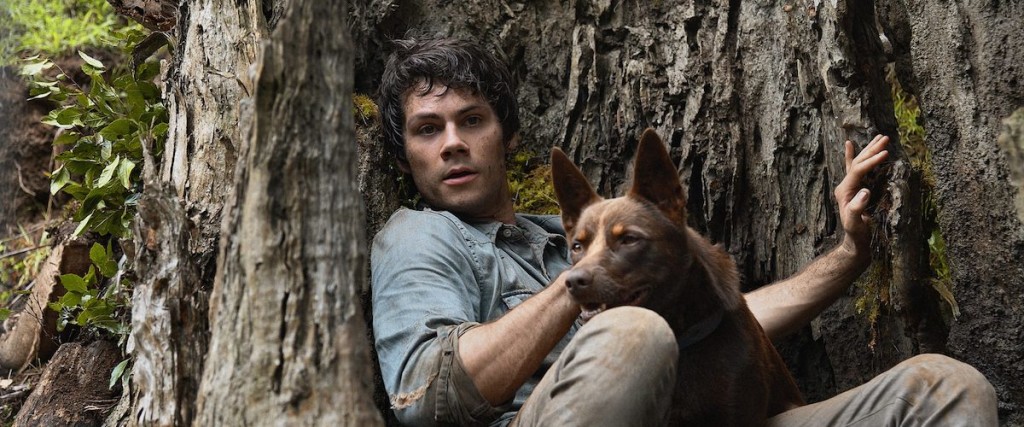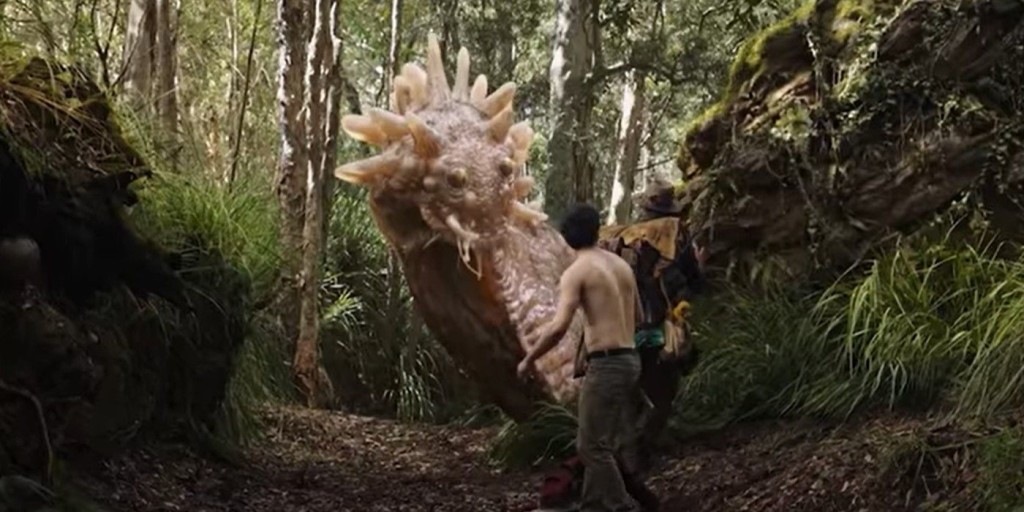YAY! A GOOD MOVIE! FINALLY!
Genre: Action/Supernatural
Premise: A young man goes on an 85-mile journey in a post-apocalyptic wasteland filled with monsters to reunite with his true love.
About: This was shaping up to be a big Paramount release until Covid hit. The script comes from Brian Duffield, who’s having a moment. He’s got his first major studio release in Love and Monsters and his directorial debut is coming out soon, Spontaneous (about a world where people spontaneously combust for no reason). I told you about Brian forever ago. Looks like people just now are realizing how talented he is.
Writer: Brian Duffield (and Matthew Robinson)
Details: 2 hours
I have never hidden my screenwriting love for Brian Duffield. At one point – maybe it’s even still the case – I had three of his scripts in my top 25. Monster Problems was one of those scripts. When I saw the trailer for the film (a full eight years after the script was written!) I didn’t recognize the script that I had read. That script was small and meditative and character-driven and clever. This trailer gave me a Monster Problems meets Zombieland vibe. It just felt like a different movie.
But then the reviews started coming in and they were good! Hmm, I thought. Maybe the heart of that way-back-when first draft survived all those studio rewrites. Sometimes that’ll happen. A concept is so good that no matter how much you mess with it, it will always work. Let’s get into the plot.
Joel lives in a bunker five years after a complex series of events led to the world being taken over by monsters. Joel’s a coward. Whereas the rest of the team in his bunker routinely goes out and kills monsters to keep the bunker stocked, Joel’s relegated to making the minestrone. That’s cause he locks up whenever he encounters a monster.
But Joel is done playing the loser. Right before the world fell apart, Joel had fallen in love with Aimee. The two were perfect for each other. But now Aimee is located 85 miles west of Joel in another bunker of people. You have to understand that 85 miles of travel on this monster-infested planet would be a suicide mission for a NAVY SEAL, much less a tiny scared dork. But Joel doesn’t care because he’s lonely and he wants to be with Aimee again.
Immediately after leaving the bunker, Joel is attacked by a giant frog monster hiding in a backyard pool. At the last second, Joel is saved by a dog named “Boy,” who pulls him away. Joel is happy to have company and asks Boy to join him. Boy says “bark!” and off they go.
Not long after that, Joel runs into an older man named Clyde and an 8 year old girl named Minnow. The two are experts in monster survival since they live above ground. Eager to get some tips, Joel asks if he can join them for a while. They’re reluctant, since Joel is basically a monster magnet, but figure he can stay with them until they turn north.
Along the way, they meet some big (and well-designed!) monsters, which reinforces just how crazy Joel was for going on this journey. The two eventually grow a liking to Joel and ask him if he wants to come north with them instead, where he’ll be safer. But Joel doesn’t hesitate. He has one goal and one goal only – get to, and be with, his soul mate, Aimee.
Before we get into the delicious details of this film, let’s talk about that title change (since we just had a big article on titles last week). “Monster Problems” to “Love and Monsters.” Which do you think is better? Personally, I don’t think it’s close. Monster Problems is a much better title. It’s both edgier and more fun.
Love and Monsters feels generic and try-hard. As in, “Please like this movie.” My guess on why they changed it cuts deep into the DNA of how studios think. Studios want you to have a good time at their movies. Good times means more money. So their inclination is go with titles that have a positive slant. “Monster Problems” has a negative connotation. “Love and Monsters” is more upbeat and positive. What are you gonna do? Studios are always going to be studioing.
This studioing continues into the very first scene. In the script, Duffield gave you the pieces to the puzzle about what’s happened to the planet and lets you put them together yourself. Paramount lays out exactly how we came to be dominated by monsters with an in-depth narration accompanied by fun animated drawings. Normally I hate this kind of thing as it strips the mystery out of the world before the movie’s even begun. But when it’s done well – the animation is both fun and funny – it can work. And Love and Monsters pulls it off. Actually, it was while watching this opening narration that I knew the movie would be good. You get a feel early on if a film is working or not. The humor and editing and animation all came together nicely so I knew I was in good hands.
Another change they made was to start our movie with a dozen characters living in a bunker as opposed to just Joel. One character works when you’re going for something more indie and edgy. But if you’re working in the studio film space, they’re going to want more characters cause they’re going to want everything to feel bigger. Duffield was able to retain the core element of the hero though – his loneliness. You could argue that this version sold the loneliness even better because nothing’s lonelier than being around a bunch of people that you don’t connect with.
Paramount goes all in with the on-the-nose storytelling when it then gives us a flashback to Joel and Aimee making out in a car right before all of this happened. That’s right. We get a FLASHBACK! Booo, flashbacks evil! Flashbacks are for loser screenwriters who don’t know how to write!
In the original script, not only was there no flashback but Joel and Aimee had never met in the real world. He only knew her from the ham radio in his bunker. This was a big change so why did they make it? I suppose the argument is that if Joel and Aimee met and fell in love beforehand, both the motivation would work better (that he would brave sure death to get to her) and the connection between the characters would be stronger in general. I don’t think this was necessary but it wasn’t a bad thing.
Here’s the little secret I occasionally share with everybody here at Scriptshadow. IF YOU GET THE CHARACTERS RIGHT, YOU DON’T HAVE TO ACE ANY OF THE OTHER SCRIPT TESTS. Joel is a strong character. Aimee is a strong character. Therefore, it would’ve worked either way (them knowing each other beforehand or only meeting on the radio). I guess this version creates a little more of a “connectedness” in the story.
Another reason this movie works so well is that it’s a classic formula. You send a guy out on a journey. That’s it. From there, if you’re smart, you add GSU. Goal – Get to his girlfriend’s bunker. Stakes – True love is on the line! And while the script doesn’t have traditional urgency, urgency can be replaced with a timeline and constant danger. We know it takes 7 days to get to the bunker. And the whole time he’s on this journey, he’s in danger of being killed by monsters.
The whole idea with urgency as a storytelling device is that it creates a sense of forward momentum. We feel like things need to happen NOW. But if you create a scenario where your hero is always being chased by something – whether it be a monster or the cops – the audience is tricked into that same mindset. That we’re “running out of time.” So that’s a trick you can use if you don’t have the perfect ticking time bomb for your movie.
What’s unique about this script-to-screen is that it’s the opposite of what usually goes down. In almost every screenplay development situation, the studio is telling you to cut things down. Less car chases. Less CGI set pieces. Less glitz and glamour. It looks like they told Duffield to do the opposite. More more more. Whatever your big nerdy ideas were for the script when you never thought it would get made, let’s include those! In that sense, it’s an outlier.
But, hey, I gotta give it to everyone involved here. They somehow took this small little quirky idea and made it into this giant movie yet still retained the heart and soul of that script, which was so good. This movie made my weekend!
[ ] What the hell did I just watch?
[ ] wasn’t for me
[ ] worth the price of admission
[x] impressive
[ ] genius
What I learned: Here’s one of the most confusing things for aspiring screenwriters. Hollywood movies embrace on-the-nose storytelling. That’s why we get the opening narration here. And that’s why we get the flashbacks with Joel and Aimee. They do this because they want everybody to “get it.” Not just seasoned moviegoers but 12 year-olds too. The irony is YOU DON’T WANT TO WRITE YOUR SCRIPT THIS WAY. You want to write more subtle, like Duffield’s original draft. Your audience for a screenplay does not include 12 year-olds. It’s readers, agents, and producers. So be subtle when you’re writing movies. On the nose will come when your movie gets made.



